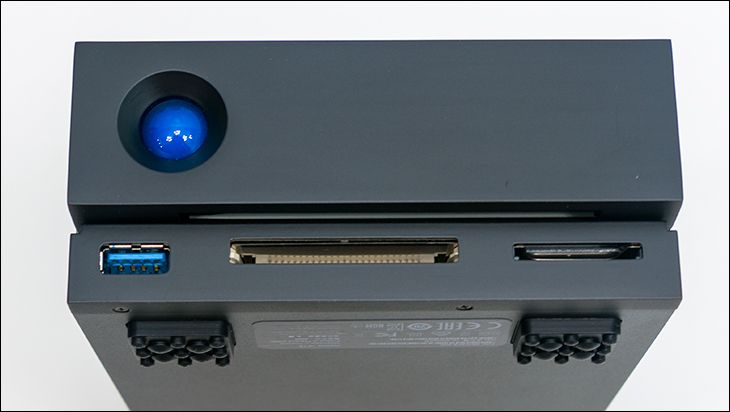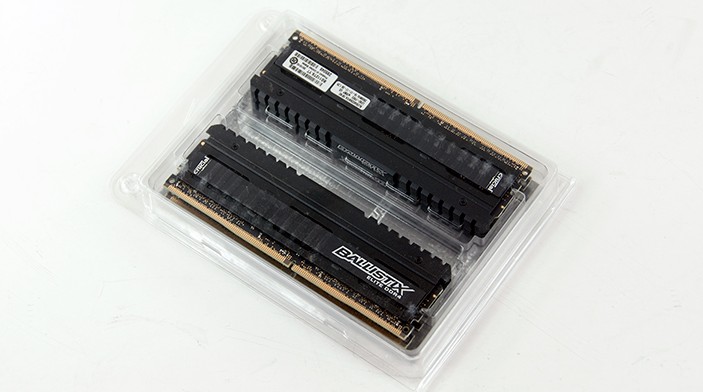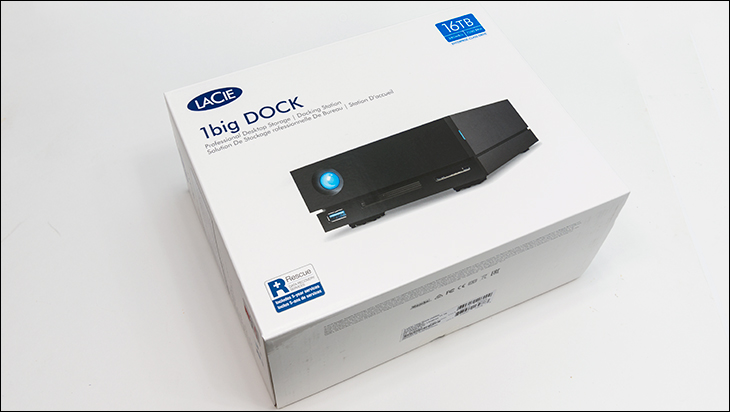
If there was ever an excellent example in ‘truth in advertising’ it is the 1Big Dock’s shipping container… as it is one big box.
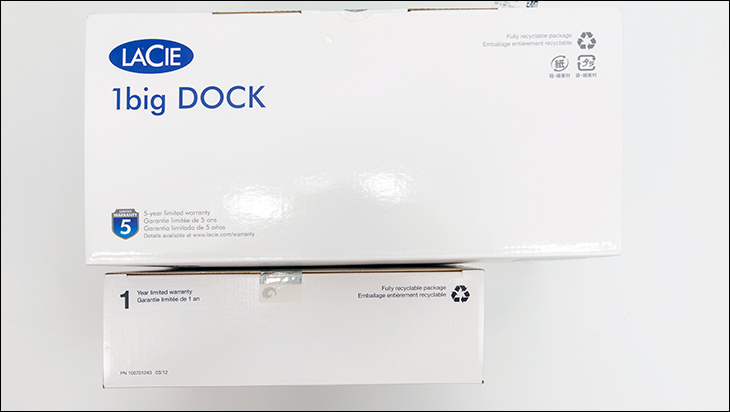
So big it literally dwarfs the Seagate Expansion Desktop’s shipping container. This really is not a bad thing as the extra space has been put to good use. At a basic level, more room means more information can be listed on the four sides of the shipping container. A fact LaCie has taken full advantage of.
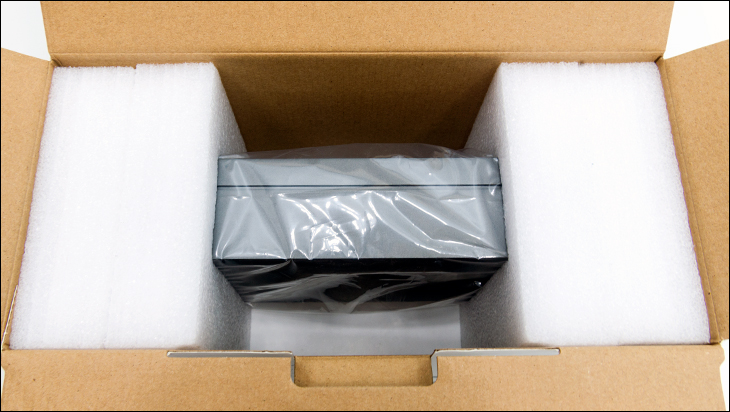
More importantly, this aesthetically pleasing shipping container’s plus sized dimensions allow for paranoid levels of internal protection. When you do open the cardboard box up for the first time you will see two massive low-density foam pieces covering the 1Big Dock. This setup allows the 1Big Dock to ‘float’ in the center of the box safe from most typical damage inducing scenarios. This really is best in class and the end result is that unless mister postman goes full postal on your new dock with an icepick, or a shotgun (or runs it over with a mail truck) there is not much they can do to it to kill your new 1Big Dock. Quite honestly, they could play soccer with this box and we doubt it would leave even scratch on the 1Big Dock inside. Color us impressed, and we wish more companies went above and beyond like LaCie does.

The accessory list is best described as extensive. First and foremost, the 1Big Dock is meant to work no matter where you are in the world and they include basically every popular wall plug adapter (and an external PSU that will work darn near any where in the world). Then you get a good Thunderbolt 3 cable, a good USB 3.1 gen 2 Type-C cable, a free one month subscription the Adobe Creative Cloud, LaCie’s version of backup and restore app (which is all but tailor-made for backing up your laptop every time you use this dock), and then a free five year subscription to Rescue Data Recovery Services. The only fly in the ointment is the free recovery service is only good for one use – but for any time during the five-year warranty period. Now this is how you do an accessory list right. Color us impressed.
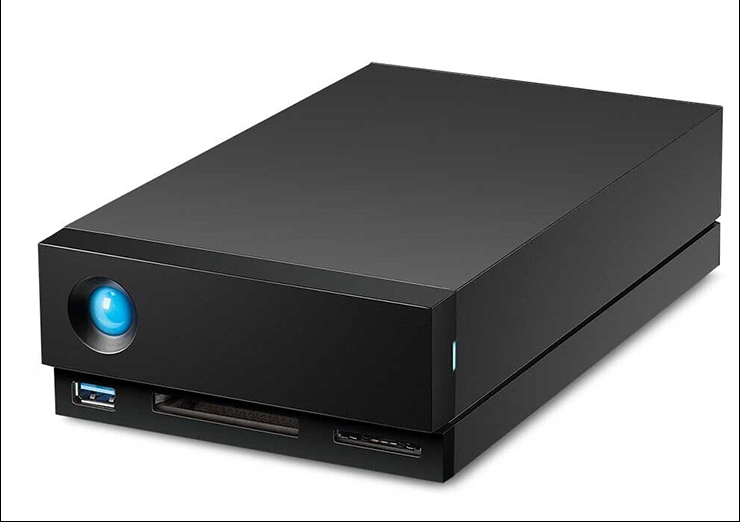
The LaCie 1Big Dock does indeed live up to its name… kinda-sorta. On the one hand, in a market where ‘smaller and lighter is better’ and every gen of docks seem to get a bit smaller (and seemingly more fragile) the LaCie 1Big Dock is rather big in both its dimensions and its weight. To be precise the LaCie 1Big Dock is 217mm/8.543in deep, by 56.3mm/2.217in wide, by 118mm/4.646in long… and tips the scales at an official 1.7KG (or 3.748 pounds).

While that is indeed big for a dock, these numbers are not all that bad for an ‘all in one’ device. When you weigh the typical dock, plus a card reader, plus an external 3.5-inch external storage solution, and all the cables that go along with that setup… 1.7KG really is not all that bad. The same is true of the dimensions, as that is not that much more than the typical 3.5-inch HDD storage enclosure.
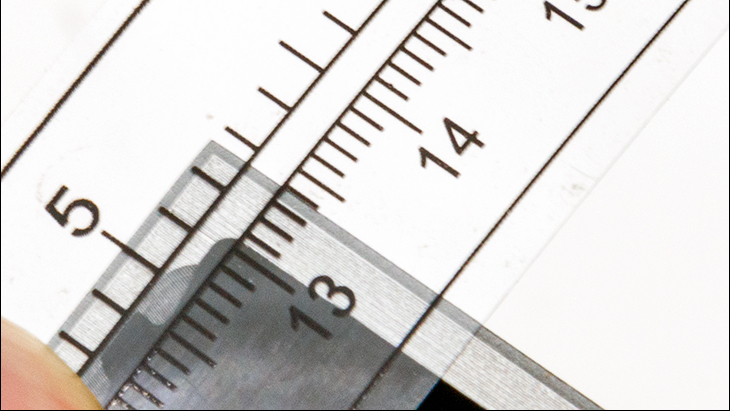
More importantly, the LaCie 1Big Dock is big and hefty because the chassis is a solid chunk of metal. To be precise the chassis’ alloy is about 4.2 millimeters (aka 1/6th of an inch) thick! Typically, such thick metal design would indicate that this is a passively cooled model, yet the moment you turn it around and look at the back you can see the 30mm fan intake port. In other words, this model is thick and robust not because it has to be a heatsink but because it is meant to handle the physical demands that professionals require from their tools. Make no mistake, this is not a utilitarian looking device. It is a LaCie branded model after all and as such its aesthetics will let it seamlessly blend in with even the most hardcore of Apple-centric users.
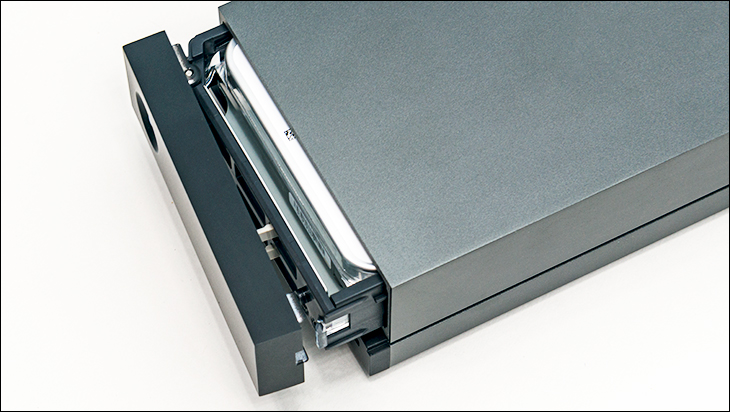
On the front of the LaCie 1Big Dock the first thing that pops out is the large blue ‘button’. Sadly, it is actually not a button. Instead it is a rather large LED that blinks/glows a rather nice shade of blue (and yet is not blinding in its output so you can use the LaCie 1Big Dock even in darker environments). The reason it is only an activity LED is because the top front of this dock is not solid. Instead it is the integrated door for the hot swappable hard drive caddy. Yes, this bad boy not only comes with an easy to replace hard drive but is actually hot-swappable. Unfortunately, the hot swap drive bay caddy is not lockable. Talk to any professional and they will all tell you the same thing: the data on their drive is more important than the device itself… and that hot-swap caddy is a double-edged sword. It literally takes mere seconds to remove the hard drive, so it also only takes mere seconds for someone to take your data – so be aware of this when using this dock at a job site.
Imperfect implementation or not, this feature alone places it in rather rarefied company as hot swappable single bay external drives are both expensive and few and far between these days. Of note is while this drive caddy appears to be solid, the bottom edge of it is open to allow the majority of the internal airflow to exhaust out the front and possibly even cool any cards inserted into its integrated card reader below. In testing cards were a touch cooler running, but it is not that much airflow – so consider any extra cooling a bonus. In either case, this setup should keep even the high performance hard drive included running happy and at fairly low temperatures.

Almost hidden below the non-lockable hard disk drive caddy is the front hub / ‘card reader’. From left to right you will find a single USB 3.0 Type-A port, a CompactFlash port, and a SD UHS-ii port. We will circle back to this configuration in a moment, but before we move on we do need to state the obvious. The LaCie 1Big Dock SSD Pro series comes with a much more capable hub. With that series buyers get a SD UHS-II card reader, a CFast card reader and a CFexpress 1.0 port… albeit one that does not support XQD cards. That is a much, much more optimal configuration. With that said, as it stands a similar USB and not ThunderBolt 3 external card reader will set you back at the very least $50. Yes, you can find cheaper card readers, but a decent ‘n’ durable one costs more.
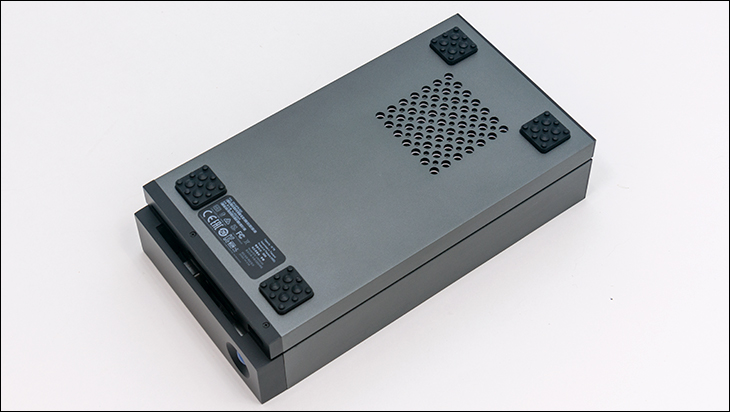
Moving on. Thanks to the rather large dimensions of the LaCie 1Big Dock, this model can indeed be used in both vertical and horizontal configurations. Yes, LaCie only includes those gorgeously engineered rubber feet on the bottom, but when tipped up on its side it is extremely stable – you really will have to work and knocking it over. Of course, as this is a hard disk drive model… it really is only meant to be used in horizontal modes, but if want to tuck it in between say your printer and monitor it can be done with little worries over an early death of the drive via a ‘bad bump’. The bottom of the LaCie 1Big Dock not only includes those nicely oversized (or in our opinion right sized) rubber feet but also a rather large exhaust port. This where the internal electronics waste heat is exhausted.

The back of the LaCie 1Big Dock is where the whole ‘dock’ bit enters the equation, and is where the main I/O port options are located. From left to right (and top to bottom) you will find a Kensington lock (which is ironic given the easy access drive caddy), the air intake port for the 30mm Sunon cooling fan (# mf30101v2-1000-g99. A 20dBA, 4.5CFM maglev ‘vapo bearing’ based fan). The next row consists of the power connector, then two ThunderBolt 3 / USB Type-C ports (with a small recessed firmware update button located between them), the DisplayPort 1.4 header, and finally a large and tactile power button. This is a decent assortment of ports but could really have used a couple USB 3.1 gen 2 Type-A ports… as this is first and foremost supposed to be a dock (more on this issue in a moment).

As this is first and foremost a dock it should come as no surprise that it offers ‘laptop’ charging. On its own – in what LaCie calls ‘Setup 2’ – the LaCie 1Big Dock series offers up to 45 watts of charging power (though in daisy chain mode it is 30watts max); however, in ‘Setup 1’ the LaCie 1Big Dock can provide up to 70 watts of power to charge your laptop. Either way, you will not need to waste a second TB3 port on your portable PC to charge its battery while using this big boy.
Which configuration will appeal to you really comes down to what you want to attach the to the LaCie 1Big Dock and what you want to be directly attached to your laptop. We say this as in Setup 1 (aka power pass-through mode) you will be using both TB3 ports on the back of the LaCie 1Big Dock. With one connected directly to your laptop and the other connected to your laptop’s power adapter (which obviously will be plugged into your wall outlet). Basically, this mode does free up a port on your laptop but you are left with only one port free on the LaCie 1Big Dock – the front Type-A USB 3.0 port. That is sub-optimal.
In Setup 2 (aka Power Delivery mode) you have that additional TB3 port on the back for other things. Things such as a USB hub… but you either have to charge your laptop at a slower rate or use the free TB3 port for charging. Which mode will be right for you will really depend on how you plan on using the LaCie 1Big Dock as a dock. To be honest, this highlights the greatest weakness with the LaCie 1Big Dock. That is the lack of ports. No one really wants to have to add in a hub to their new dock – especially on a pricey dock. The main selling feature of this model is consolidation. Replacing multiple separate parts (dock, external HDD, card reader) with one device. As a dock it is a touch lacking. This is puzzling as the 2Big Dock series comes with an extra USB 3.1 Type-C / TB3 port on the back that does somewhat minimize this issue.

LaCie would have been much better served by making two tweaks to the LaCie 1Big Dock design. First, replacing the CompactFlash port on the front with additional USB ports. One Type-A USB port is just not that impressive – especially a USB 3.1 gen 1 (aka USB 3.0) port and not USB 3.1 gen 2. Professionals wanting to ‘dock’ their portable computer to their main desk will have a USB based printer, maybe a scanner, certainly a mouse and keyboard, probably a Wacom tablet and… maybe even a 3DConnexion SpaceMouse. Few professionals these days use CF cards. Of course, if this CF port had been the newer CFexpress we would not be so quick to suggest replacing it, but CF based cameras and the like are few and far between these days – CFexpress and XQD have all but killed CF in the pro and prosumer market.
The other tweak is the 45watt limit of the built-in power delivery. Yes, this is a decent amount of power, but the Thunderbolt 3 and USD-PD specifications allows for up to 100 watts of power. Yes, this change would have required even beefier internals (and probably a bit more routing of air via the back fan) but it would have minimized this issue over lack of ports. In a perfect world the LaCie 1Big Dock would provide 70 or higher watts of charging power without needing to use both TB3 ports on the back of the dock. It would have a SD UHS-ii and CFast and a CFexpress with XQD support port on the front… and it would have more TB3 / USB Type-C ports on the back. Now let’s crack this beast open and see what makes it tick!
